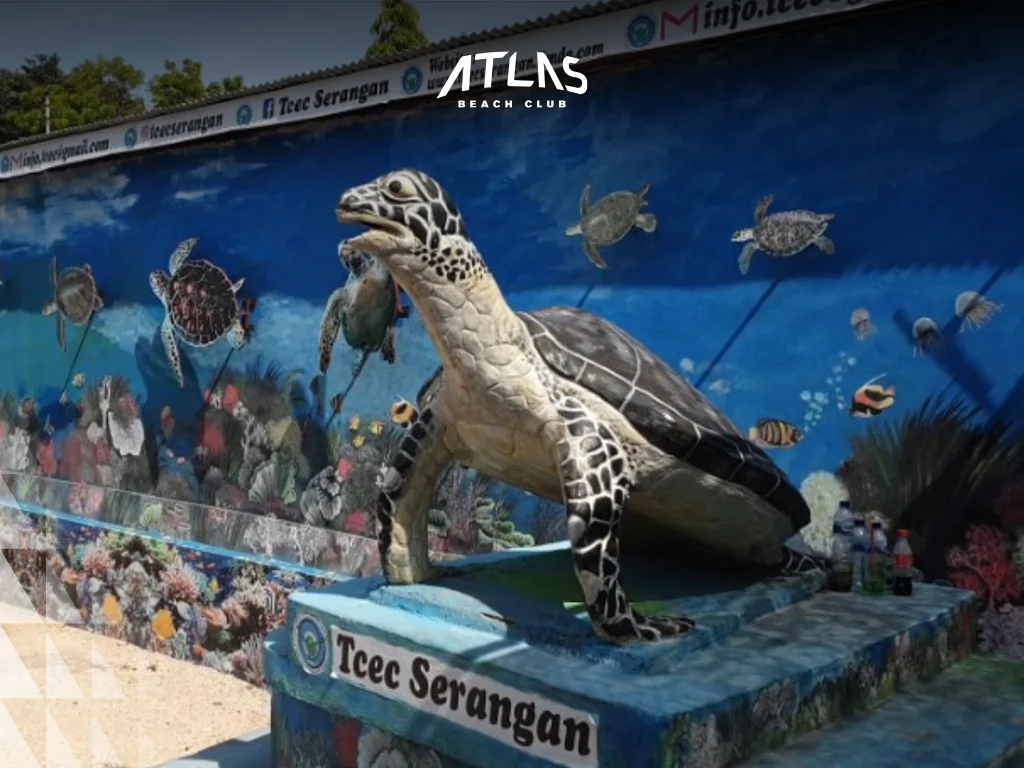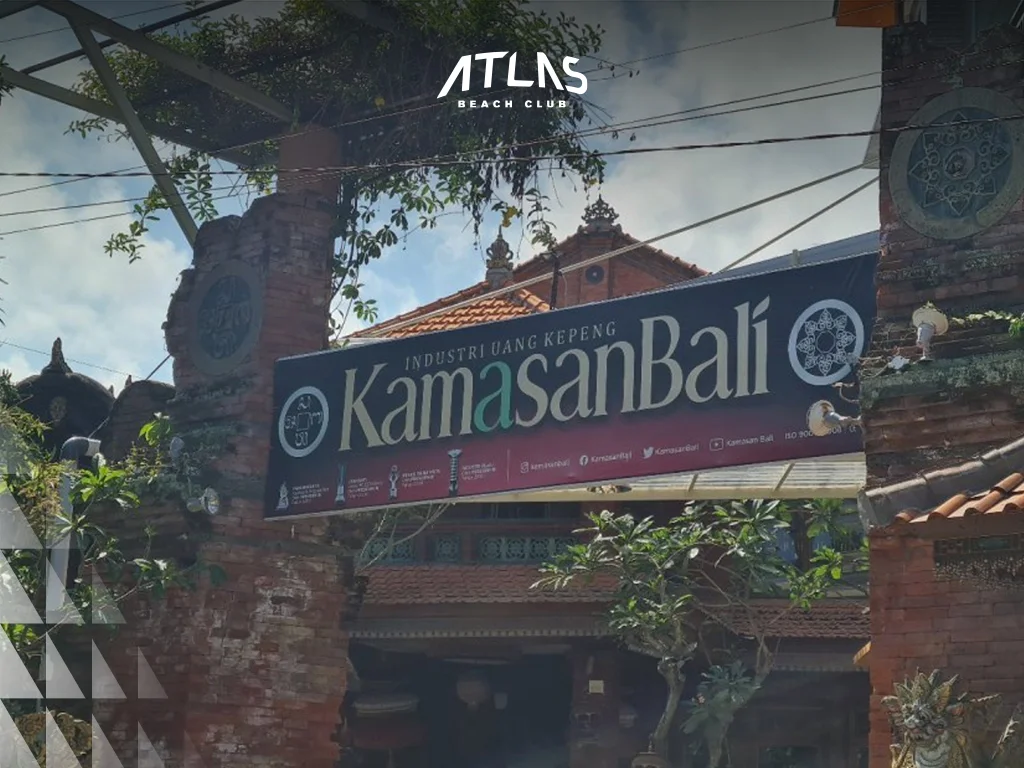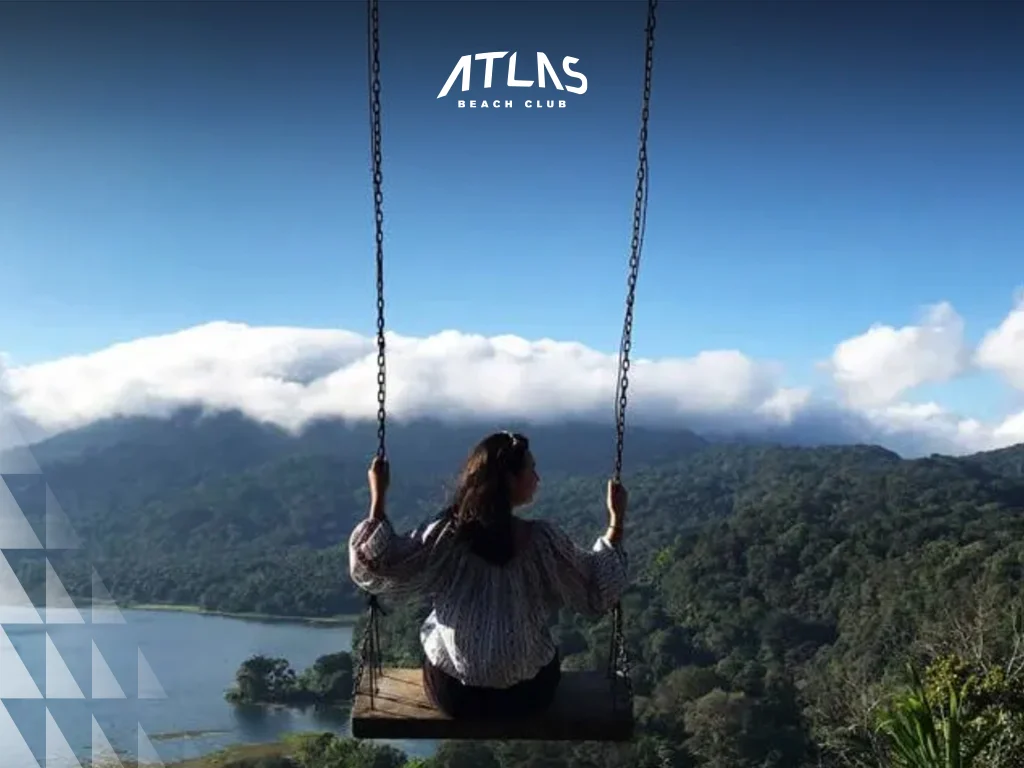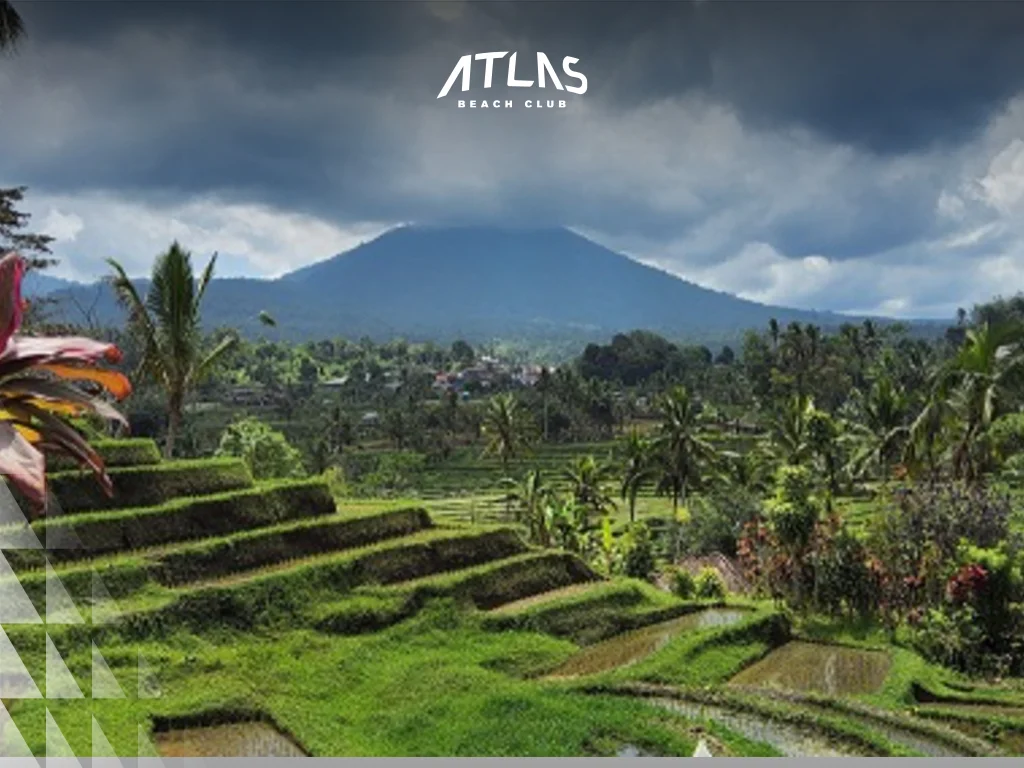Explore Sustainable Tourism in Bali: A Guide to Eco-Friendly Travel
Sustainable tourism in Bali has transformed the island into a model for eco-friendly travel. Emphasizing environmentally responsible activities, Bali invites travelers to enjoy its rich culture, stunning landscapes, and unique conservation efforts. Sustainable tourism in Bali involves activities that reduce environmental impact, support local communities, and preserve the island’s natural beauty.

Find The Best Sustainable Tourism in Bali in 2025
1. Visit Atlas Beach Club

Atlas Beach Club is a pioneering destination for travelers interested in sustainable tourism in Bali. Located along Bali’s stunning coastline, this club is committed to reducing environmental impact through various eco-friendly initiatives. By avoiding single-use plastics and sourcing sustainable materials, Atlas Beach Club sets an example of how luxury can blend seamlessly with environmental responsibility. Visitors here not only enjoy a scenic beach experience but also support a venue that prioritizes Bali’s ecological well-being.
- No single-use plastics: Atlas Beach Club eliminates disposable plastics to minimize waste.
- Locally sourced materials: The club uses eco-friendly materials to reduce its carbon footprint.
- Support for local communities: Atlas Beach Club partners with local vendors and artisans, enhancing sustainable tourism in Bali.
- Beach conservation efforts: Regular clean-ups and eco-awareness campaigns help protect the local beach environment.
2. Turtle Conservation on Serangan Island

The Turtle Conservation and Education Center on Serangan Island is a vital part of sustainable tourism in Bali. This center is dedicated to rescuing, rehabilitating, and releasing sea turtles, as well as educating visitors about marine conservation. By supporting this sanctuary, visitors contribute to the protection of endangered species and gain awareness of Bali’s unique marine ecosystem. It’s a hands-on experience that aligns with Bali’s ecotourism principles, allowing travelers to make a meaningful impact.
- Turtle rescue and rehabilitation: Injured turtles are cared for and eventually released back into the ocean.
- Education programs: Visitors learn about the importance of marine life and sustainable tourism in Bali.
- Hands-on conservation: Opportunities for tourists to participate in hatchling releases and other conservation activities.
- Support for local ecosystem: The center plays a crucial role in preserving Bali’s marine biodiversity.
3. Balinese Painting in Kamasan Village

Kamasan Village is renowned for preserving the traditional Balinese painting style, a heritage art form that reflects Bali’s cultural identity. Visitors can participate in painting workshops that showcase local techniques, offering a unique and immersive cultural experience that supports sustainable tourism in Bali. By engaging with these artisans, travelers help sustain the village’s art community, ensuring that local traditions are valued and passed down to future generations.
- Traditional painting workshops: Learn classic Balinese painting techniques directly from skilled local artists.
- Support for local artisans: Engaging in this activity helps provide a steady income for the village’s art community.
- Cultural preservation: Promotes the continuity of Bali’s unique artistic heritage.
- Eco-friendly materials: Many artists use natural pigments and locally sourced materials, reducing environmental impact.
4. Lontar Crafting in Cangkeng Village

Cangkeng Village is home to artisans skilled in the traditional craft of creating beautiful items from lontar palm leaves, a sustainable and natural material. Visitors can witness the intricate process and even try their hand at crafting, making it a unique cultural experience within sustainable tourism in Bali. Purchasing these handcrafted lontar items supports local artisans, preserves traditional skills, and encourages the use of eco-friendly materials, aligning perfectly with Bali’s sustainability goals.
- Hands-on crafting experience: Visitors can observe and participate in the lontar crafting process.
- Support for local economy: Buying these crafts provides income for the artisans and their families.
- Preservation of tradition: Helps sustain the ancient art of lontar crafting in Bali.
- Eco-friendly materials: Lontar leaves are a renewable resource, reducing the environmental footprint of this craft.
5. Traditional Cooking in Kemenuh Village

In Kemenuh Village, visitors can immerse themselves in Balinese culture through traditional cooking classes that highlight local ingredients and authentic recipes. This hands-on experience allows travelers to understand Bali’s culinary heritage while supporting sustainable tourism in Bali. By sourcing ingredients from local farmers and markets, these classes reduce the environmental impact of food transport and promote Bali’s agricultural economy. It’s a meaningful way to connect with the island’s culture while contributing to sustainable practices.
- Hands-on cooking classes: Learn to prepare traditional Balinese dishes with guidance from local chefs.
- Locally sourced ingredients: Supports Bali’s agricultural sector and reduces food transportation emissions.
- Cultural immersion: Provides a deeper understanding of Balinese culinary traditions and techniques.
- Community support: Participating in these classes supports small farmers and local businesses, contributing to the local economy.
6. Highland Wilderness in Munduk

Munduk, a picturesque highland village, is a haven for eco-tourists seeking lush forests, waterfalls, and misty mountains. The village’s natural beauty and biodiversity make it a popular destination for those interested in sustainable tourism in Bali. Through eco-conscious hiking trails and conservation-focused tours, visitors can explore Munduk’s serene landscapes while minimizing environmental impact. It’s an ideal spot for travelers who want to experience Bali’s natural side responsibly.
- Eco-friendly hiking trails: Guided hikes emphasize low-impact practices to protect Munduk’s natural habitats.
- Waterfall exploration: Visit stunning waterfalls while supporting responsible tourism in Bali’s highlands.
- Conservation-focused tours: Guides educate visitors on local flora, fauna, and the importance of preserving Bali’s ecosystems.
- Support for local communities: Sustainable tourism in Munduk encourages economic growth while preserving traditional village life.
7. Eco-Friendly Resorts in Bali

Bali’s eco-friendly resorts are designed to offer luxury while staying committed to environmental sustainability, making them an ideal choice for travelers interested in sustainable tourism in Bali. These resorts integrate green practices, such as renewable energy use, water conservation, and waste reduction. By choosing to stay at an eco-friendly resort, visitors not only enjoy a unique experience but also contribute to the preservation of Bali’s natural landscapes and cultural heritage.
- Renewable energy sources: Many eco-resorts use solar power and other renewable energies to reduce their carbon footprint.
- Water conservation initiatives: Efforts like rainwater harvesting and water recycling help conserve Bali’s precious water resources.
- Waste reduction practices: Resorts minimize waste through recycling programs, composting, and avoiding single-use plastics.
- Support for local communities: Eco-friendly resorts often employ local staff and source materials locally, fostering sustainable development.
8. Sacred Monkey Forest Sanctuary in Ubud

The Sacred Monkey Forest Sanctuary in Ubud is a prime example of sustainable tourism in Bali that balances conservation with cultural preservation. Home to hundreds of long-tailed macaques, the sanctuary is both a wildlife haven and a sacred site for locals, emphasizing respect for nature and tradition. Visitors are encouraged to explore the forest while learning about Bali’s biodiversity and the importance of responsible tourism practices to protect these habitats.
- Wildlife conservation: The sanctuary protects and supports a large population of macaques in a natural setting.
- Cultural significance: The forest is a sacred site with ancient temples, blending natural conservation with Balinese spiritual heritage.
- Educational experiences: Visitors learn about responsible wildlife interaction and the importance of preserving Bali’s ecosystems.
- Habitat protection: Sustainable tourism practices help fund conservation efforts and maintain the sanctuary’s ecological balance.
9. Beach Clean-Up Programs

Beach clean-up programs are a powerful way for tourists and locals alike to support sustainable tourism in Bali by directly protecting the island’s beautiful coastline. These organized events invite participants to remove plastic waste and debris, preserving Bali’s beaches and marine life. By joining a clean-up, travelers actively contribute to reducing pollution and raise awareness about the impact of plastic waste on Bali’s environment, making it an impactful experience for eco-conscious visitors.
- Community engagement: Beach clean-ups bring together locals and tourists to work towards a cleaner environment.
- Pollution reduction: Removing waste helps protect marine life and improves beach quality for future visitors.
- Education and awareness: Participants learn about the effects of plastic pollution and the importance of sustainable practices.
- Support for local initiatives: Many clean-ups are organized by Bali-based organizations, encouraging long-term community involvement.
10. Eco-Farming in Jatiluwih Rice Terraces

The Jatiluwih Rice Terraces, a UNESCO World Heritage site, are famous for their breathtaking landscapes and traditional Subak irrigation system. This eco-farming method reflects the island’s commitment to sustainable tourism in Bali by preserving agricultural heritage and promoting environmentally friendly practices. Visitors can explore these terraces, learn about Bali’s unique rice cultivation techniques, and see firsthand how eco-farming supports local communities and the environment.
- Traditional Subak irrigation: This ancient water management system is sustainable and vital for preserving Bali’s rice fields.
- Cultural heritage: The terraces highlight Bali’s agricultural traditions, promoting respect for local farming practices.
- Eco-farming tours: Visitors gain insights into organic farming and sustainable land management.
- Support for local farmers: Tourism in Jatiluwih contributes to the local economy, helping farmers sustain their eco-friendly practices.
FAQs on Sustainable Tourism in Bali
It refers to environmentally friendly travel practices that benefit local communities, support conservation efforts, and preserve cultural heritage.
Simple steps like reducing plastic use, supporting local artisans, and respecting cultural sites all contribute to sustainable tourism in Bali.

Conclusion: Sustainable Tourism in Bali
Sustainable tourism in Bali offers a diverse range of activities that allow travelers to experience the island in an eco-conscious way. By visiting places like Atlas Beach Club, supporting conservation efforts, and embracing traditional Balinese culture, international tourists can positively impact Bali’s environment and communities. Through eco-friendly travel practices, each visitor plays a part in preserving Bali’s natural beauty and cultural heritage for generations to come.
Other Articles
Where is Bali? Bali is a small island that has an incomparable uniqueness. However, Bali is also known as a tourist destination that must be on the bucket list of tourists. But still, lots of people ask, “Where is Bali island located?”. Please note that Bali is an island located in a country called Indonesia. […]
Bali Indonesia Also known as the Land of the Gods and Island of a Thousand Temples. Bali, Indonesia, fascinates the culture passed down from its ancestors with its dramatic dances, traditional music that hypnotizes the mind, ceremonies that are full of meaning and sacred, arts and crafts, to its luxurious hotels and resorts. In Bali, […]
Best Time to Visit Bali Bali is one of the best tourist destinations in the world. Bali has many variations of tourism that you can experience. Even though it has many recreational options, the most important things must be known before you go to Bali. When is the best time to visit Bali? Weather in […]
